FCC to BCC
Revision as of 17:54, 13 November 2016 by KevinYager (talk | contribs) (Created page with "The FCC lattice can be distorted to become a BCC. An expansion along the x- and y-directions, with corresponding contraction along the z-direct...")
The FCC lattice can be distorted to become a BCC. An expansion along the x- and y-directions, with corresponding contraction along the z-direction, can continuously distort the FCC into an BCC structure.
Note that in the FCC state, with unit cell:
there is a "distorted" BCC lattice with a tetragonal (square cuboid) unit cell:
In the final BCC state, we instead have unit cell:
and the FCC lattice has been distorted into a tetragonal cell:
Note that in general . To conserve volume during the transformation would require that:
Experimental conversion factors may deviate from this. (E.g. Fe conversion has a BCC lattice parameter is 0.776 that of the FCC lattice.)
See Also
- Cemal Engin and Herbert M. Urbassek Molecular-dynamics investigation of the fcc → bcc phase transformation in Fe Computational Materials Science, Volume 41, Issue 3, January 2008, Pages 297-304 doi: 10.1016/j.commatsci.2007.04.019
- Negative supracrystals inducing a FCC-BCC transition in gold nanocrystal superlattices doi: 10.1007/s12274-013-0384-9
- The Bain versus Nishiyama–Wassermann path in the martensitic transformation of Fe doi: 10.1088/1367-2630/11/10/103027
- Thermoreversible, Epitaxial fcc↔bcc Transitions in Block Copolymer Solutions doi: 10.1103/PhysRevLett.89.215505
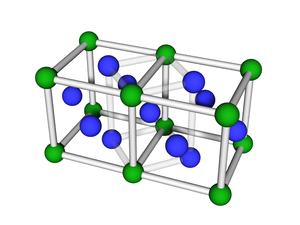
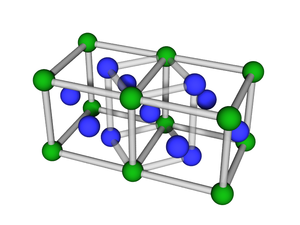
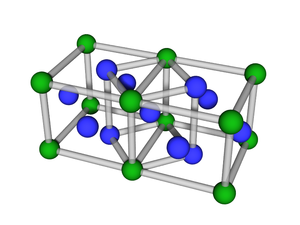
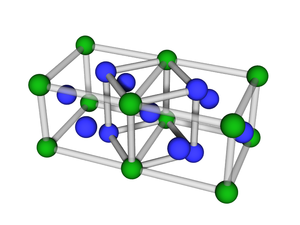
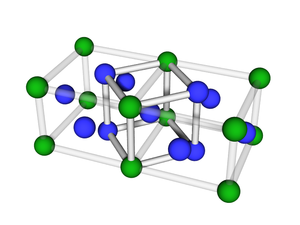





![{\displaystyle {\begin{alignedat}{2}a_{BCC}^{3}&={\frac {a_{FCC}^{3}}{2}}\\{\sqrt[{3}]{a_{BCC}^{3}}}&={\sqrt[{3}]{\frac {a_{FCC}^{3}}{2}}}\\a_{BCC}&={\frac {1}{\sqrt[{3}]{2}}}a_{FCC}\\a_{BCC}&\approx 0.693a_{FCC}\end{alignedat}}}](https://wikimedia.org/api/rest_v1/media/math/render/svg/bd358b916e5fe5d73e059017ac3f43ca9a545ebc)